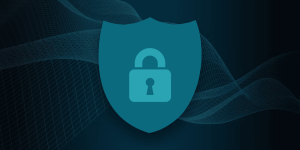How Google’s $5 Billion Settlement Affects Your Data
If you are one of the billions of Google users who browse the web in Incognito mode, you might want to pay attention to this article. Google has recently agreed to settle a $5 billion lawsuit over its tracking of users’ online activity in Incognito mode. This is a landmark case that has significant implications for your online privacy and security. In this article, I will explain what the lawsuit was about, how Google tracked users in Incognito mode, what the settlement means for users, and how you can protect your online privacy and security.
What Is the Google Incognito Lawsuit?
The Google Incognito lawsuit was filed in 2020 by millions of Google users who claimed that Google violated their privacy by tracking their online activity in Incognito mode. Incognito mode is a feature that allows users to browse the web without saving their browsing history, cookies, or site data. Users expected to be anonymous and untracked when they used this feature, but they were not.
The lawsuit alleged that Google used various tools, such as cookies, analytics, and plug-ins, to collect data from users who browsed the web in Incognito mode. This data included information about their location, device, interests, preferences, and behavior. The lawsuit claimed that Google used this data to create detailed profiles of users and target them with personalized ads, products, and services.
The lawsuit also accused Google of violating federal wiretapping and California privacy laws, which prohibit the interception and use of electronic communications without the consent of the parties involved. The lawsuit sought at least $5,000 in damages per user, which could amount to more than $5 billion in total.
The lawsuit was based on a Reuters report that revealed that Google and other companies were able to track users in Incognito mode by exploiting a loophole in the web browser. The report also showed that Google did not inform users about this tracking or how to prevent it.

How Did Google Track Users in Incognito Mode?
Google tracked users in Incognito mode by using various tools that bypassed the browser’s privacy settings. These tools included:
- Cookies: These are small files that store information about users’ preferences and behavior on websites. Google used cookies to identify users across different websites and devices, even in Incognito mode. Google also used cookies to sync users’ data across its services, such as Gmail, YouTube, and Google Maps.
- Analytics: These are tools that measure and analyze users’ online activity, such as the pages they visit, the time they spend, and the actions they take. Google used analytics to collect data from users in Incognito mode and use it to improve its products and services, as well as to target users with relevant ads and content.
- Plug-ins: These are software components that add functionality to websites, such as videos, games, and social media buttons. Google used plug-ins to track users in Incognito mode and access their data, such as their IP address, device type, and browser settings.
Google was able to track users in Incognito mode because the browser did not block these tools by default. Users had to manually adjust their browser settings or install extensions to prevent this tracking. However, Google did not clearly inform users about this or how to do it.
According to an NBC News article , Google defended its tracking of users in Incognito mode by saying that it was transparent and consistent with its privacy policies. Google also said that it provided users with tools and choices to control their privacy, such as deleting their browsing history, clearing their cookies, or opting out of personalized ads.

What Is the Settlement and What Does It Mean for Users?
Google agreed to settle the lawsuit for $5 billion, without admitting any wrongdoing or liability. The settlement was approved by a federal judge in California in December 2023, after months of negotiations and objections from some plaintiffs.
The settlement requires Google to change its privacy practices and disclosures for Incognito mode. Specifically, Google has to:
- Stop using cookies, analytics, and plug-ins to track users in Incognito mode, unless they explicitly consent to it.
- Provide clear and conspicuous notices to users about its tracking of users in Incognito mode and how to prevent it.
- Create a dedicated website and a help center page that explain how Incognito mode works and how users can protect their privacy and security.
- Conduct regular audits and reports to ensure compliance with the settlement terms and privacy laws.
The settlement also provides compensation to the eligible plaintiffs, who are the Google users who browsed the web in Incognito mode between June 1, 2016 and December 31, 2021. Each plaintiff can receive up to $5,000 in damages, depending on the number of claims and the amount of data collected by Google.
The settlement is expected to benefit millions of Google users who value their online privacy and security. The settlement will also set a precedent for other tech companies that track users’ online activity without their consent or knowledge.
According to a CNBC article , the settlement was hailed by some privacy advocates and experts as a victory for consumers and a wake-up call for Google. However, some critics and opponents argued that the settlement was too lenient and did not adequately address the underlying issues of Google’s dominance and data collection practices.
According to a Yahoo News article , some plaintiffs objected to the settlement and appealed to a higher court, claiming that the settlement was unfair, inadequate, and unreasonable. They argued that the settlement did not provide enough compensation to the plaintiffs, did not require Google to delete the data it collected, and did not prevent Google from tracking users in other ways.
How Can You Protect Your Online Privacy and Security?
While the settlement is a positive step towards improving Google’s privacy practices and disclosures for Incognito mode, it does not guarantee that your online privacy and security are fully protected. There are still other ways that Google and other companies can track your online activity and use your data for their own purposes.

Therefore, it is important that you take proactive measures to safeguard your data from online tracking and surveillance. Here are some tips and best practices that you can follow to protect your online privacy and security:
- Use a VPN: A VPN, or a virtual private network, is a service that encrypts and routes your internet traffic through a secure server in another location. This hides your IP address, location, and online activity from your internet service provider, Google, and other third parties. A VPN also allows you to access geo-restricted content and websites that are blocked or censored in your region. You can use a VPN on your computer, smartphone, or tablet, and choose from various VPN providers and plans. However, you should be careful and do your research before choosing a VPN, as some VPNs may not be trustworthy or reliable. You should also avoid using free VPNs, as they may compromise your privacy and security by selling your data, injecting ads, or exposing you to malware. You can read more about VPNs and how to choose the best one for your needs in this PCMag article .
- Use a password manager: A password manager is a tool that generates and stores strong and unique passwords for your online accounts. This prevents you from using the same or weak passwords that can be easily guessed or hacked by cybercriminals. A password manager also protects your passwords from phishing, keylogging, and other attacks that can steal your login credentials. You can use a password manager on your computer, smartphone, or tablet, and sync your passwords across your devices. You can also use a password manager to create and store secure notes, credit card information, and other sensitive data. You can choose from various password managers and plans, depending on your preferences and budget. However, you should make sure that the password manager you choose is reputable and secure, and that you use a strong master password to access it. You should also enable two-factor authentication for your password manager and your online accounts, as an extra layer of security. You can read more about password managers and how to use them effectively in this FTC article .
- Use an antivirus software: An antivirus software is a tool that protects your computer, smartphone, or tablet from viruses, malware, spyware, and other threats that can harm your device and your data. An antivirus software scans your device and your files for any suspicious or malicious activity, and blocks or removes it. An antivirus software also warns you of any unsafe or infected websites, downloads, or attachments that you encounter online. You can use an antivirus software on your computer, smartphone, or tablet, and update it regularly to keep up with the latest threats. You can choose from various antivirus software and plans, depending on your needs and budget. However, you should be careful and avoid downloading or installing any fake or rogue antivirus software that can infect your device and your data. You should also complement your antivirus software with other security tools and practices, such as a firewall, a browser extension, or a backup service. You can read more about antivirus software and how to choose the best one for your device in this Cloudwards article.
- Use a data privacy management tool: A data privacy management tool is a tool that helps you manage and control your personal data online. A data privacy management tool allows you to see what data is collected and stored by Google and other companies, and how it is used and shared. A data privacy management tool also allows you to access, delete, or download your data, and to opt out of data collection, tracking, or sharing. You can use a data privacy management tool on your computer, smartphone, or tablet, and choose from various tools and plans. However, you should be careful and make sure that the data privacy management tool you choose is trustworthy and secure, and that you understand the terms and conditions of using it. You should also review your data privacy settings regularly and adjust them according to your preferences and needs. You can read more about data privacy management tools and how to use them effectively in this Techopedia article .
- Be aware and informed: The most important thing you can do to protect your online privacy and security is to be aware and informed of the risks and challenges you face online. You should educate yourself about the latest trends and developments in the digital world, and how they affect your data and rights. You should also be aware of the policies and practices of Google and other companies that collect and use your data, and how you can exercise your choices and control over them. You should also be informed of the laws and regulations that govern data privacy and security in your country and region, and how you can seek redress or recourse if your data is breached or misused. You can stay aware and informed by reading reliable and reputable sources of information, such as news articles, blogs, podcasts, or books. You can also join online communities and forums that discuss and share information and tips on online privacy and security. You can read more about how to be aware and informed of your online privacy and security in this Norton article .
Conclusion
Google’s $5 billion settlement over its tracking of users in Incognito mode is a significant event that has implications for your online privacy and security. In this article, I explained what the lawsuit was about, how Google tracked users in Incognito mode, what the settlement means for users, and how you can protect your online privacy and security. I hope you found this article informative and helpful. If you have any questions, comments, or feedback, please feel free to share them with me. Thank you for reading.












